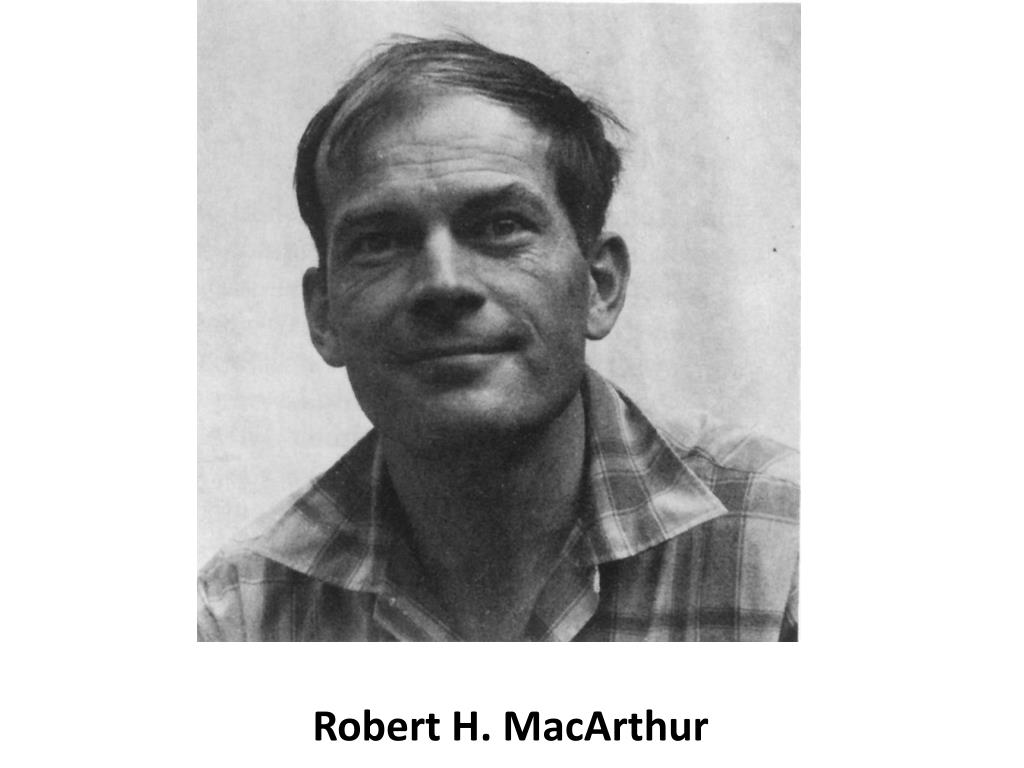Excitement About Ecology and Evolutionary Biology Today: An Analysis of Dr.Robert Macarthur's Contributions

From Island Biogeography to Food Webs: Ideas coming from Dr. Robert MacArthur's Study
Dr. Robert MacArthur was a prominent ecologist whose groundbreaking study changed our understanding of island biogeography and food items webs. His work delivered useful knowledge in to the mechanics of ecological communities and the interaction between species communications and ecological elements. In this blog message, we will definitely look into some of Dr. MacArthur's vital contributions to these industries and review their relevance.
Island biogeography is the research study of how species are distributed on islands, taking in to account aspects such as island dimension, range coming from the mainland, and immigration and extinction rates. Dr. MacArthur's investigation in this region challenged prevailing ideas at the opportunity and presented new concepts that carry on to shape our understanding of biodiversity designs on islands.
One of his very most important additions was the concept of island biogeography, co-developed along with E.O. Wilson in 1967. This theory suggested that species richness on an island is identified by a balance between migration costs (species conquering the island) and extinction rates (species going extinct on the island). According to this idea, much larger islands more detailed to the landmass have much higher migration prices due to their bigger aim at place for colonization and lower extinction costs due to their much larger populations.
This principle possessed great effects for conservation biology as it highlighted the importance of preserving large habitations connected through corridors for keeping biodiversity. It additionally stressed that little isolated habitations are extra vulnerable to species reduction due to restricted immigration and increased vulnerability to local extinctions.
Dr. MacArthur's investigation went beyond isle biogeography and extended in to checking out food items webs – complicated networks of supplying partnerships among living things in an ecological community. He looked into how energy streams by means of food items establishments, how various trophic degrees communicated along with each other, and what elements determined community reliability.
One of his notable payments was his work on specific niche partitioning within areas. Niche dividing refers to how species break down information to lessen competitors and coexist in an ecological community. Dr. MacArthur's research study revealed that species occupying comparable particular niches tend to compete for information, leading to lowered simultaneousness. However, when various species utilize various parts of the on call sources, they may coexist more properly.
His research study on warblers in N . American forests demonstrated how these birds partition their supplying particular niches by occupying different parts of tree canopies and seeking on distinct pest target. This discovery lost light on the systems that ensure species range within neighborhoods and how ecological communications mold community structure.
Dr. MacArthur's job likewise explored the relationship between biodiversity and ecological community feature. He showed that raising species grandeur within a area may enhance its stability and resilience against disruptions. This finding highlighted the relevance of preserving biodiversity not only for preservation functions but likewise for preserving ecosystem companies such as nutrient cycling, pollination, and pest command.
On top of that, his analysis on island biogeography led him to look into the impacts of habitation fragmentation on species diversity. He found that as habitat patches become smaller sized and even more isolated due to individual activities such as logging, species splendor decreases significantly. This has crucial ramifications for conservation initiatives as it underscores the demand to shield large adjoining habitations to stop further reduction of biodiversity.
In conclusion, Dr. Robert MacArthur's research study in isle biogeography and food items webs has delivered valuable ideas right into the mechanics of ecological communities and the factors determining biodiversity patterns. Key Reference have shaped our understanding of how species are distributed on islands, highlighted the significance of niche partitioning in advertising coexistence within neighborhoods, and emphasized the function of biodiversity in sustaining environment stability.
His job proceeds to influence environmentalists today, helping conservation efforts targeted at maintaining habitations and defending at risk ecological communities worldwide. Through building upon his lead-in researches, we can strive towards a better understanding of our organic world and function towards its sustainable future.

Recommendations:
1) MacArthur R., & Wilson E.O (1967). The Idea of Island Biogeography. Princeton University Press.
2) MacArthur R.H (1972). Topographical Ecology: Patterns in the Circulation of Species. Princeton University Press.
